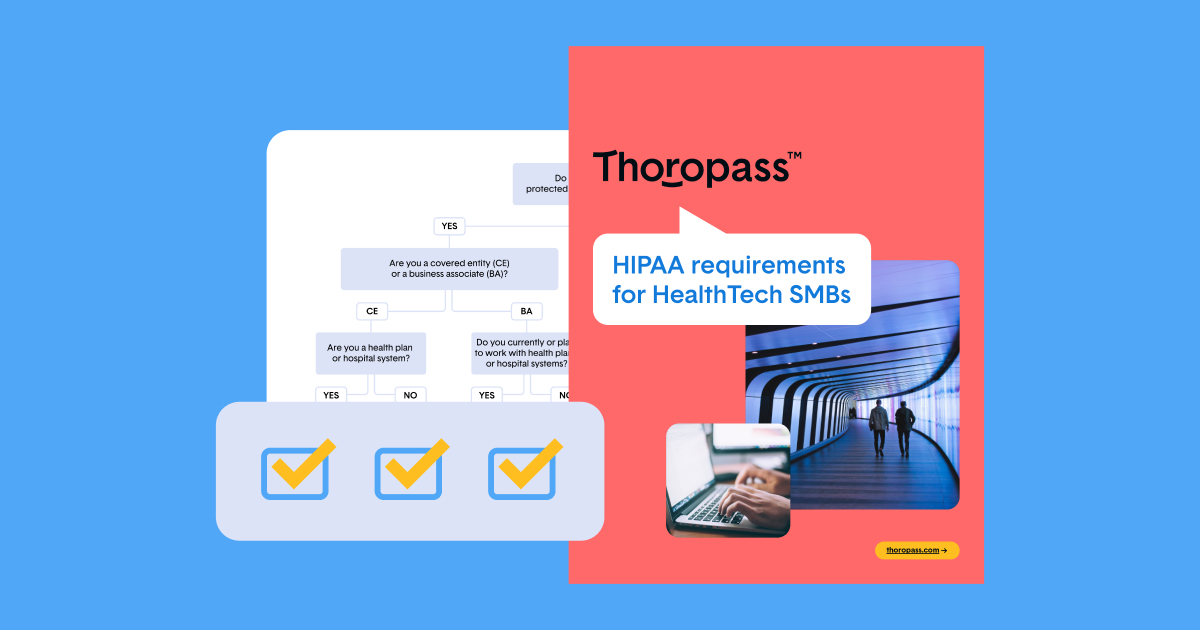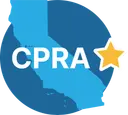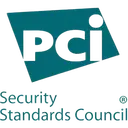Oro provides content designed to educate and help audiences on their compliance journey.
The HIPAA Minimum Necessary Rule, a subsection of the overarching Privacy Rule, mandates that covered entities and business associates only use and disclose the minimum amount of protected health information (PHI) necessary.
Understanding and complying with the HIPAA Minimum Necessary Rule is more important than ever. In this blog post, we’ll delve into what you need to know about this essential standard and how it safeguards patient privacy.
Short summary
- The HIPAA Minimum Necessary Rule ensures secure and confidential protection of patient information.
- Organizations must actively implement the rule by creating policies, access controls and security protocols, providing employee training & awareness, understanding exceptions to the rule, and making sure reasonable efforts are taken when using/disclosing PHI.
- Technology can help organizations comply with the HIPAA Minimum Necessary Rule
High level: Understanding HIPAA, PHI, and the Minimum Necessary Rule
The HIPAA Minimum Necessary Rule, regulated by the Department of Health and Human Services, is a vital component of protecting patient privacy. The rule’s primary objective is to limit access to PHI to only those who need it for their job roles, ensuring that sensitive patient information remains secure and confidential.
The HIPAA Minimum Necessary Rule mandates that covered entities and business associates only use and disclose the minimum amount of protected health information (PHI) necessary to achieve the intended purpose.
Health Insurance Portability and Accountability Act (HIPAA)
HIPAA is a comprehensive regulation ensuring the proper handling and protection of patient information. The HIPAA Privacy Rule, a part of HIPAA, sets the standards for protecting individuals’ medical records and other protected health information. This rule applies to:
- Healthcare providers
- Healthcare clearinghouses
- Health plans
- Business associates, such as medical transcriptionists, claims processing administrators, and cloud service providers (CSPs)
Note that covered entities must comply with all of HIPPA’s Privacy Rules while a specific subset of those rules also apply to their business associates to ensure compliance.
Protected Health Information (PHI)
PHI is any information about an individual’s health that is created or received by a healthcare provider, health plan, employer, or healthcare clearinghouse. It can be held or maintained by a covered entity or its business associates and transmitted or stored in any form or medium, including electronic protected health information (ePHI). So long as it’s associated with a past, present, or future medical service, PHI examples can include:
- A person’s name
- Address
- Birth date
- Medical record number
The importance of PHI in relation to the HIPAA Minimum Necessary Rule lies in protecting people’s privacy and ensuring that only authorized individuals access the information.

RECOMMENDED FOR YOU
The comprehensive guide to healthcare compliance
See how SOC 2, HIPAA, and HITRUST can create the right compliance mix for scaling companies in the healthcare space.
Implementing the ‘minimum necessary standard’
Organizations must take proactive steps to comply with the HIPAA Minimum Necessary Rule. This process involves:
- Understanding the types of PHI that need protection
- Creating policies that outline the “reasonable efforts” to secure each type
- Providing additional training or guidance to staff members or departments as needed
By establishing a strong foundation for handling PHI, organizations can mitigate the risk of unauthorized disclosure and ensure HIPAA compliance.
Developing policies and procedures
Creating clear policies and procedures for dealing with PHI is essential to ensure compliance with the HIPAA Minimum Necessary Rule.
Organizations should begin with a written policy outlining the HIPAA Minimum Necessary Standard and how it will be applied within their specific context, including potential exceptions and consequences for non-compliance.
This policy should provide guidelines on limiting the use, disclosure, and request of PHI to the bare minimum necessary to achieve the desired result in various scenarios, such as email exchanges, USB drives, and patient forms.
Access controls and security protocols
Robust security measures are crucial for protecting PHI and adhering to the Minimum Necessary Rule. Organizations should implement the following access controls:
- Restrict unauthorized access to PHI
- Define permissions based on job roles
- Implement the Principle of Least Privilege, which states that users should only have access rights necessary for their role
These measures complement the Minimum Necessary Standard by ensuring that only essential access is granted.
Cloud service providers (CSPs) must also be considered when implementing security protocols. Contracts with CSPs should outline their responsibilities for storing, destroying, and backing up data, as well as procedures for returning records after contract termination.
Audit logs that monitor access and attempted access to PHI can help organizations detect suspicious activity and prevent potential violations.
Employee training and awareness
Educating staff members on HIPAA regulations and the Minimum Necessary Rule is critical to ensuring compliance within an organization. Employees should be aware of the rule to ensure they only use, disclose, and request the minimum amount of PHI necessary to achieve their objectives. Regular training and guidance can help organizations monitor compliance and address knowledge gaps as needed.
Reasonable efforts and reasonable reliance
‘Reasonable efforts’ and ‘reasonable reliance’ are two essential concepts related to the HIPAA Minimum Necessary Rule.
- Reasonable efforts refer to the actions taken by a covered entity and business associate to safeguard PHI, including implementing policies, procedures, and security measures.
- Reasonable reliance allows an organization to trust someone else’s statements or guarantees as long as it’s reasonable to assume they’re true.
Together, these concepts ensure that organizations make rational justifications while using and disclosing PHI, further protecting patient privacy.
What are the consequences of non-compliance with the HIPAA Minimum Necessary Rule
Violating the HIPAA Minimum Necessary Rule can result in serious consequences for organizations. These include:
- Civil penalties ranging from $100 to $50,000 per violation, with a yearly maximum of $1.5 million USD
- Criminal penalties including fines of up to $250,000 USD and a possible jail time
- Additional costs such as hiring lawyers, implementing new security measures, or compensatory damages
Non-compliance can also have severe repercussions on an organization’s reputation. Loss of customers, decreased revenue, and difficulty regaining public trust are just a few more potential consequences of a HIPAA violation. Organizations must prioritize compliance with the HIPAA Minimum Necessary Rule to avoid these damaging outcomes.
How can technology help organizations comply with the HIPAA Minimum Necessary Rule?
Technology plays a significant role in helping organizations adhere to the HIPAA Minimum Necessary Rule. By implementing monitoring systems and software solutions, organizations can better control access to PHI and ensure that only authorized individuals have access to the necessary information.
Additionally, just-in-time access security measures can grant temporary privileged access within a specific time frame, further limiting unauthorized access to sensitive data.
Organizations should continue to invest in technology solutions and explore innovative ways to enhance the protection of PHI and comply with the HIPAA Minimum Necessary Rule.
Chat with our compliance experts: A free 15-Min AMA
Let us help! Streamline HIPAA compliance with expert guidance, automation, and third-party attestation.
Connect with a compliance expert to find out how HIPAA applies to your business. Book your free 15-min chat here.
Our 4-step approach makes HIPAA much easier to navigate:
- STEP 1: Onboarding. Get up and running in minutes with native integrations, policy templates, and clear action items
- STEP 2: Implementation. Breeze through putting your HIPAA roadmap into operation with guided workflows and support from our experts
- STEP 3: HIPAA assessment. As a third party, Thoropass delivers a trusted compliance report to share with your customers and prospects
- STEP 4: And beyond… Leverage our end-to-end platform to add frameworks, renew attestation, and ensure continuous compliance
Learn more about what your HIPAA compliance journey with Thoropass will look like here!
FAQs about the HIPAA Minimum Necessary Rule
What is the Minimum Necessary Rule?
The Minimum Necessary Rule is a part of the Privacy Rule for HIPAA, which requires covered entities to make reasonable efforts to limit access to Protected Health Information (PHI) only to those in the workforce who need it based on their roles in the covered entity.
This means that only those who need access to PHI should be granted access, which should be limited to the minimum necessary required to perform their job.
What are the 3 HIPAA requirements?
The three main requirements of HIPAA are:
- The Privacy Rule
- The Security Rule
- The Breach Notification Rule
These rules protect the confidentiality of patient health information by setting standards for how it can be used and disclosed.
What would be a policy requirement for minimum necessary under HIPAA?
Under HIPAA, covered entities and business associates must make reasonable efforts to limit access to Protected Health Information (PHI) to the minimum amount necessary for fulfilling the intended purpose. Access to PHI should be restricted to employees who need it based on their roles.
CONTINUED READING
Find the right compliance mix for your HealthTech business
Compliance isn’t just required—it’s good business. Leverage this guide to see how you can leverage SOC 2, HITRUST, and HIPAA compliance to help your business stand out in a crowded marketplace.

Related Posts
Stay connected
Subscribe to receive new blog articles and updates from Thoropass in your inbox.
Want to join our team?
Help Thoropass ensure that compliance never gets in the way of innovation.














.png)